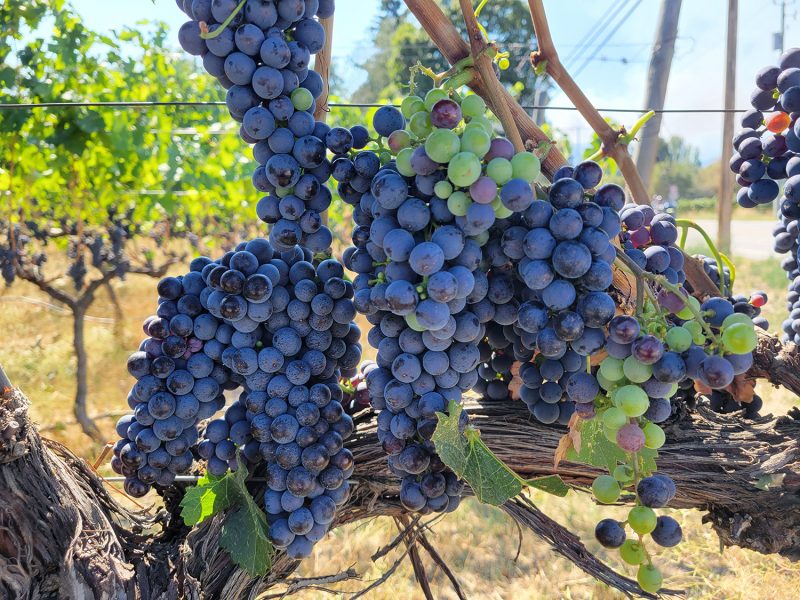New tools are helping growers anticipate and assess the impact of weather on their plants, but the truth of how resilient they’ve been in the face of extreme weather events is often not known until harvest.
Data for 2022 released February 16 by Statistics Canada indicates that several fruit crops saw lower production last year, in part due to spring frosts and a cold, damp start to the season.
Yields in wine grape vineyards fell for the third straight year, Statscan reports, with the total crop down 7% last year to 26,540 tons. This is nearly 10,000 tons below the 2019 harvest of 35,537 tons. This is despite relatively stable acreage during the period.
A report last year by Cascadia Partners for the BC Vineyard Resiliency Task Group convened by Wine Growers BC pinned the persistence of short crops on a more variable weather associated with a changing climate.
“An increase in the incidence of extreme heat and cold events, as well as variable precipitation patterns, have all had large negative impacts on crop yields since 2018,” it stated.
Blueberries, the top fruit crop in BC with an annual value of $156.6 million, has also been impacted by adverse weather events. The flooding on Sumas Prairie in November 2021 followed the next month by extreme cold and a spring where conditions were less than optimal for pollination, reduce volumes by 4% last year – double the decline in bearing acreage. This translated to 3,100 fewer tons brought to market and marked the third straight year of declines, according to Statscan data.
The crop was 22,000 tons below its 2019 peak of 94,718 tons, and 9% below its five-year average production.
Despite the challenges, some established crops saw improved yields last year.
These included raspberries, where new plantings boosted per-acre yields by 32% after years of weather-related declines and pears, which saw yields rise 16% despite slightly lower acreage.


 Avian influenza threat looms
Avian influenza threat looms